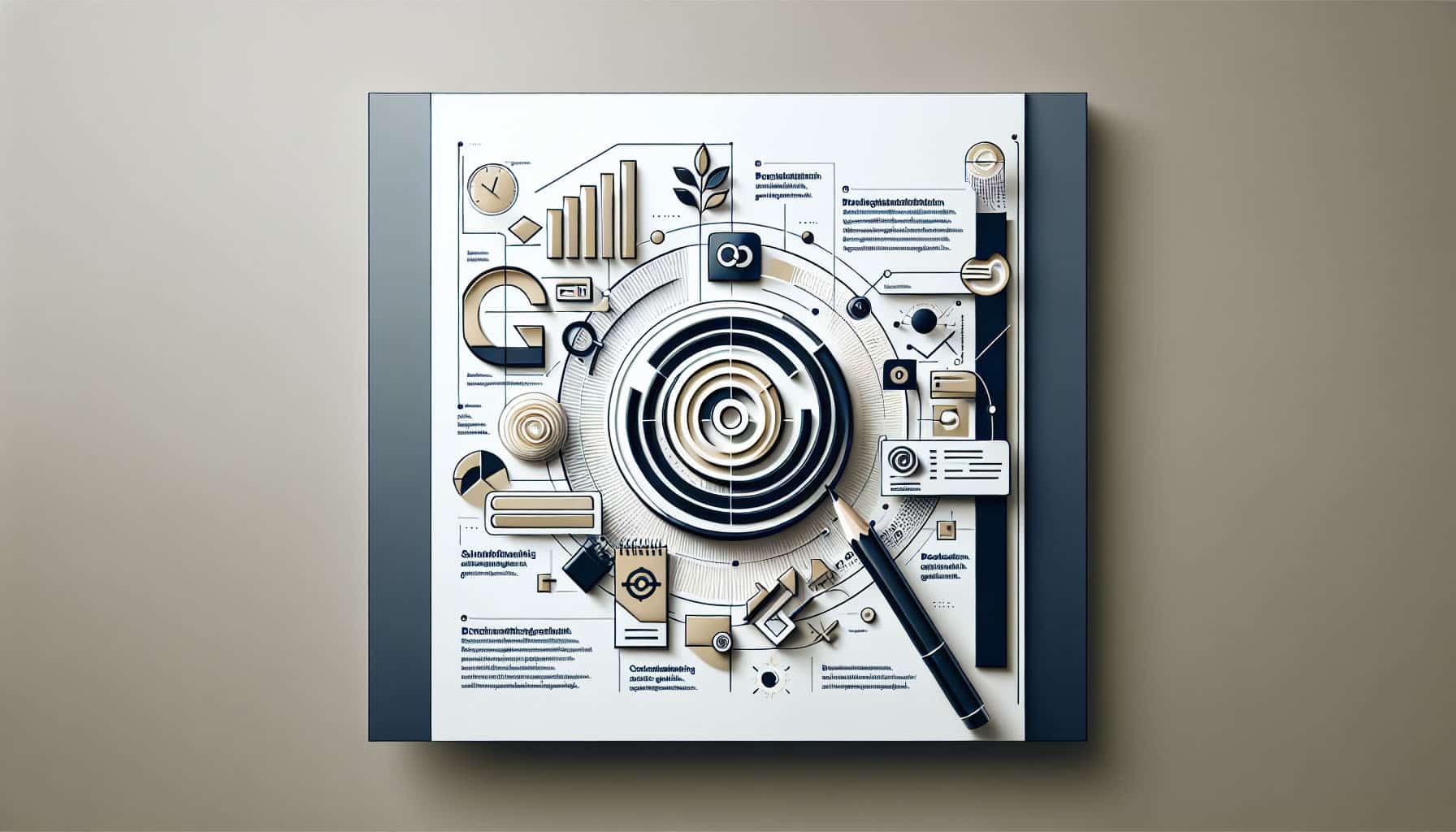Definition of Corporate Design:
Corporate Design is the visual representation of a company that significantly contributes to the perception of brand identity. It encompasses a variety of elements consistently used to create a unified image:
- Visual Basic Elements:
- Logo: The central graphic symbol representing a company.
- Color Scheme: Carefully selected colors used in all visual media.
- Typography: Uniform fonts used across all company materials.
- Layout: The arrangement of various design elements on media such as websites or print materials.
- Imagery: The selection of images and graphics that underscore the company’s character.
- Key Messages: Concise messages that communicate the company’s values.
- Applications:
- Business Stationery: Business cards, letterheads, envelopes, and other office materials.
- Marketing Materials: Brochures, flyers, posters, and digital content.
- Product and Packaging Design: Design of products and their packaging to ensure brand consistency.
- Interior Design: Design of business spaces to create a consistent brand experience.
- The Importance of Corporate Design:
- Brand Recognition: Consistent corporate design increases brand recognition.
- Differentiation: Clearly distinguishes the company from competitors.
- Brand Value: Professional appearance enhances the brand’s value.
- Customer Loyalty: Unified design promotes customer trust and loyalty.
The Corporate Design Manual or Style Guide is the cornerstone of this visual strategy. It documents all aspects of corporate design and serves as a guide for its application. Successful examples like Coca-Cola or IBM demonstrate how an iconic corporate design can increase recognition value and brand loyalty. With a well-thought-out corporate design manual, you ensure that your brand presents a consistent and professional image externally.
Elements of Corporate Design
When developing your corporate design, it is crucial that each element is carefully selected and aligned with your brand identity. Here are the main elements you should consider:
- Logo: The centerpiece of your visual identity, often consisting of a wordmark, logo mark, or a combination of both. It should be memorable and capture the essence of your brand.
- Colors: Colors evoke emotions and should align with the overall identity of your brand. They play a vital role in corporate design as they contribute to emotional attachment.
- Typographie: It communicates the values, attitude, and mood of your brand. The selection of fonts, their size, spacing, and usage must be consistent and reflect the personality of your brand.
Imagery encompasses the consistent use of images that harmonize with the brand identity, while graphic elements and illustrations support the logo, slogan, or text blocks and can explain complex topics in a simple, visual way. Layout defines the positioning of text blocks, logos, colors, images, and graphic elements relative to each other and should be consistent across all platforms and media.
A strong corporate design not only increases brand recognition but also differentiates your company from competitors, communicates your brand values, and builds trust with your customers. The process of creating a corporate design involves several steps, from analyzing the company identity to concept development and designing individual elements to creating a guide for their application and applying the new corporate design to all available design media. By carefully considering these elements in your CD design, you ensure that your brand conveys a consistent and professional message.

Benefits of Corporate Design for Businesses
Corporate Design (CD) is much more than just an aesthetic statement – it is a strategic marketing tool that defines and strengthens your brand. By creating a consistent visual identity that includes your logo, color palette, typography, and imagery, you establish a distinctive brand that stands out from the competition and remains memorable.
- Brand Recognition: A unified CD ensures instant recognition of your brand. This is crucial for staying present in the minds of your customers and building a lasting connection.
- Trust and Credibility: A professionally designed CD exudes competence and fosters trust among your target audience. It supports emotional attachment and increases customer loyalty.
- Optimization for Digital Media: Your CD should be optimized for digital platforms to be displayed optimally on various devices and operating systems. Responsive web design and accessibility are key aspects here.
The process of implementing a corporate design requires careful analysis of the current image and defining new principles. The goal is to reduce the brand philosophy to a clear core message and make optical and qualitative improvements.
A strong CD visually represents the desired message and lays the foundation for building brand awareness. By consistently applying the corporate design over time, you build trust with your customers and present a unified and comprehensive image of your company and its values.
Your unique corporate design is not only a unique selling proposition (USP) that highlights the specific qualities of your company but also increases brand awareness, solidifies customer trust, and underscores your professionalism. By consistently relying on your CD, you can increase brand recognition and distinguish yourself significantly from your competitors.
Process of Creating a Corporate Design
The creation of a Corporate Design (CD) is a structured process that requires a deep understanding of the brand. To develop a coherent and effective CD, you should follow these steps:
- Analysis and Strategy Development:
- Understand the mission, vision, and values of your brand.
- Define your target audience and analyze the competition.
- Develop unique design principles that represent your brand and set it apart from the competition.
- Creative Concept Development:
- Choose colors that evoke the desired emotions and differentiate from competitors.
- Select typography that aligns with your company’s identity and philosophy.
- Design a logo that represents your company and its values.
- Develop a consistent imagery that supports your brand identity.
- Creation of the Corporate Design System:
- Create a Corporate Design Manual or Style Guide that documents all design elements and their application.
- Establish layout rules to ensure consistent application of the design.
- Implement the CD across various applications, such as business cards, letterheads, websites, and packaging.
- Regularly review and update the CD to ensure its relevance and effectiveness.
Collaborating with a professional agency can help achieve the best results and make your CD a strong instrument of your Corporate Identity. Additionally, consider patenting your CD to protect your intellectual property. By carefully following these steps, your CD effectively communicates the identity and values of your company while building trust and recognition among your customers.
Graphic design
Examples and Best Practices
When developing your Corporate Design (CD), you can learn from the best practices and examples of leading brands. These companies have succeeded in creating a distinctive brand identity through their CD:
- Coca-Cola: With a globally recognizable logo and consistent color scheme in red and white, Coca-Cola is a prime example of successful Corporate Design. The dynamic Spencerian font is a timeless element recognized by 94% of the world’s population.
- Lego: The bubble letters and four-square design of the logo, reminiscent of the basic Lego brick, demonstrate the Corporate Design’s focus on the product.
- Apple: The minimalist design of the bitten apple and the changing color schemes reflect the innovative and dynamic nature of the company.
- Spotify: A clear, minimalist design and the Wi-Fi symbol in the logo represent the digital and user-friendly brand identity.
The following criteria are crucial for successful Corporate Design:
- High recognition value: The brand remains memorable and stands out from the competition.
- Alignment with Corporate Identity: The CD must reflect the values and identity of the brand.
- Professional appearance: Simplicity and self-explanation contribute to a professional image.
- Consistency: Uniform use of logo, typography, color scheme, and other elements ensures brand consistency.
Creating a Corporate Design requires various skills – from market research to design and communication to project management. Tools like Snagit facilitate the creation of style sheets and ensure that employees use the correct company colors and shapes.
A Corporate Design Manual or Style Guide is an essential tool to ensure the consistent application of the CD across different channels and materials. By carefully integrating these elements into your CD design, you ensure that your brand conveys a consistent and professional message and successfully positions itself in the market.
Costs and Budget Planning for Corporate Design
The costs associated with developing a Corporate Design can vary significantly and depend on several factors:
- Company Size and Type: Small startups may only require a simple logo and basic CD elements, while larger companies may need comprehensive rebranding, including a CD manual.
- Market Size and Competitive Level: In a highly competitive market, investing in a distinctive and eye-catching Corporate Design may be necessary.
- Current State of the Corporate Design: Refreshing an existing design may be more cost-effective than developing an entirely new Corporate Design.
Components of Pricing for Corporate Design:
- Number of graphic elements
- Analysis effort
- Development of the brand concept
- Number of different design proposals
It is important to note that quoted prices usually only cover the design aspect; printing and production costs are considered separately. While working with amateur designers may seem cost-effective, it can often compromise professional quality. It is advisable to invest in professional services to ensure that your Corporate Design achieves the desired impact and presents your brand optimally.








